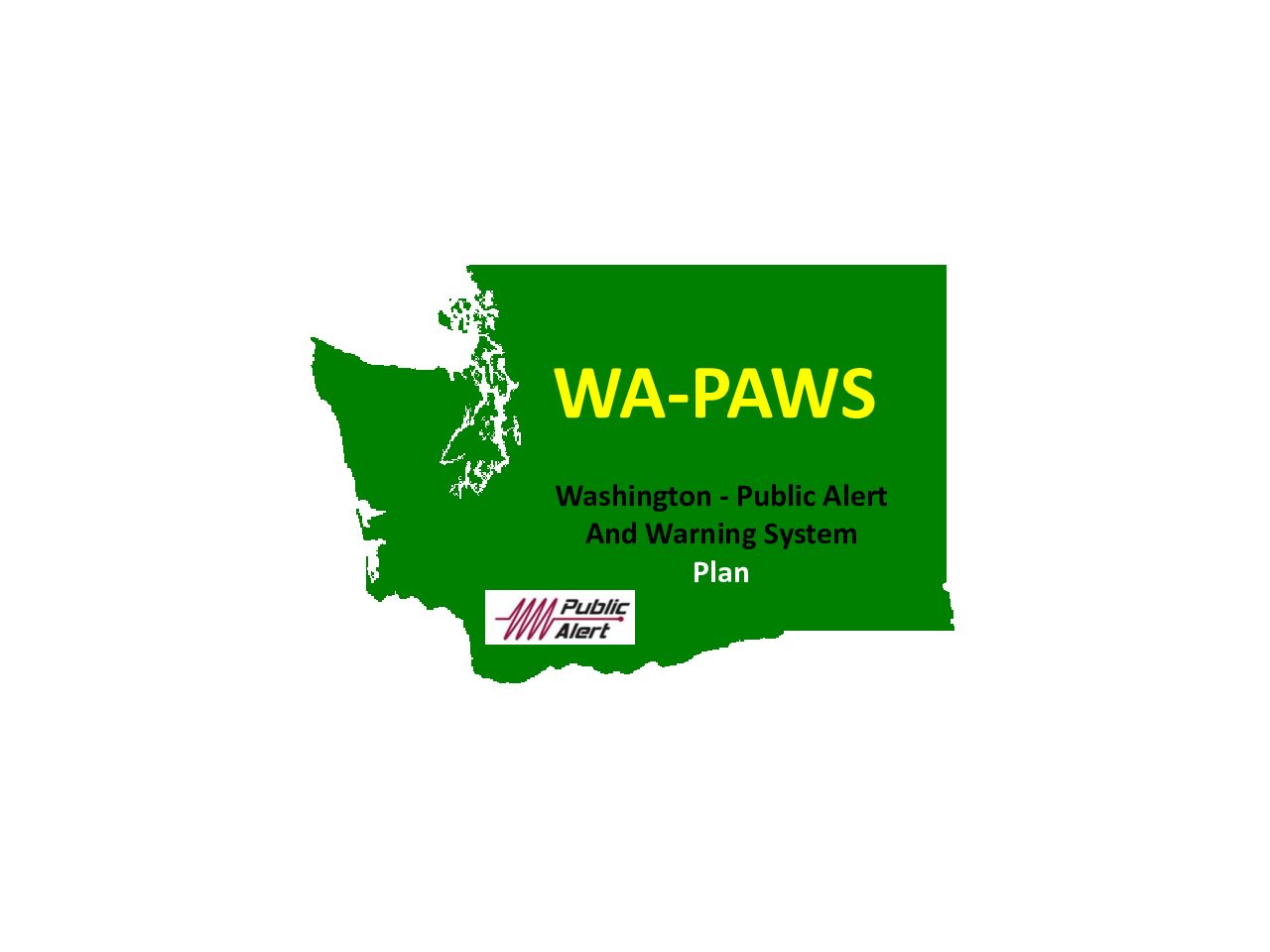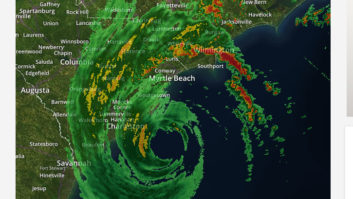
Numerous state organizations and emergency communications committees weighed in on the Federal Communications Commission’s EAS proposals — of those, the battle cry from Washington state has been to press the FCC to create a system that is intelligent and flexible, one that considers individual states’ EAS needs.
“In Washington State, when the Emergency Alert System was still in the planning stage, several of the local stakeholders saw the potential for EAS to be much more than a means to distribute national presidential messages,” said Clay Freinwald, chairman of the State Emergency Communications Committee there. Instead, a national EAS framework would be able to distribute emergency messages of local and regional importance, to create a message distribution system with redundancy and intelligibility, and to encourage individual SECC’s to inclusively involve all the stakeholders in the public warning process.
Freinwald’s involvement in public warning began in the late 1960s when he served as a local-area chair in the Tacoma, Wash., area with the Emergency Broadcast System, and he has been honored as Broadcaster of the Year by the Washington State Association of Broadcasters for his work with EAS. In 2007 Radio World named him a recipient of its Excellence in Engineering Award.
Radio World spoke with Freinwald about the EAS priorities and challenges his state his facing and what he’d like to see arise from a final FCC EAS order.
Radio World: What have been the priorities for Washington state when it comes to crafting an EAS plan?
Clay Freinwald: Our plan was crafted almost 20 years ago. At the time there was not much in the way of instructions, other than the new FCC Rules. We made a number of decisions regarding our new plan, such as keeping certain elements of EBS [the Emergency Broadcast System], such as our State Relay Network.
And we dumped things that were sources of continued critical comments, such as the using a daisy-chain alerting mechanism; the role of broadcasters as “relay stations,” when they could instead be allowed to concentrate on reaching the public with public warnings; making the plan modular so that portions could be updated periodically; rotating test origination so that it becomes a training vehicle; setting up regular meetings that are open to the public; and developing a strong working relationship with state emergency management, the National Weather Service and other state and local agencies.
We also worked to establish and maintain a list server to serve as a communications circuit to everyone involved. This Listserv sent out items such as plan updates, meeting notices, technical resources and testing details.
RW:What would you say are some of your organization’s biggest successes?
Freinwald: That we have substantial support from broadcasters as well as government at all levels, that we have demonstrated success in various areas, that we are willing to be innovators and think outside the box, and that our state is being used by others as an example of what can be done.
RW: What are some of the biggest changes you’d like to see the FCC implement as part of the Part 11 proposals?
Freinwald: We’d like to see the FCC formalize the SECCs by better describing their function, duties, responsibilities, participants and scope of authority.
RW:Some have called for more standardization of state plans; others have called for the commission to leave this up to individual states. What is Washington’s take on the issue?
Freinwald: There is a huge disconnect with the use of the term “state plan.” The FCC’s view of a state plan is limited to the distribution of EANs and NPTs [Emergency Action Notification and National Periodic Test], and the testing of those systems that fulfill that mission. The Washington SECC’s view of the state plan includes all of the FCC Part 11 requirements as well as other matters such as AMBER Alerts, weather alerts, civil emergencies and WEA [Wireless Emergency Alerts]. In our response to the latest Notice of Proposed Rulemaking we made specific recommendations for dealing with this issue.
RW:What steps should the FCC put in place for harmonizing EAS and WEA alerts?
Freinwald: This will be difficult as the wireless carriers are playing hardball with their participation. Certainly an expansion in the number of event codes as well as the restriction on test length is in order.
RW:Some have praised the simplicity of the daisy-chain process. What is Washington state SECC’s stance on this issue?
Freinwald: What they are praising is not the simplicity but rather the fact that this system was used with EBS and the fact that no effort is required to do anything else. The daisy-chain is fraught with problems. Among them is the fact that any chain is only as strong as its weakest link; that there is no requirement for any one station to forward anything beyond EAN, NPT and RMT [Required Monthly Tests], leaving the majority of the user of EAS without a distribution system; and that any LP station can, at any time, elect to stop participating in EAS.
The bottom line is that the daisy-chain is a very poor method of distributing life-saving messages and, had it not been used with EBS, would have never been considered as viable.
RW: What other methodology should be installed in its place?
Freinwald: Our belief is that a superior system is one designed around what we call a point-multipoint distribution system. Examples are NOAA Weather Radio, which is used as an EAS message source nationwide. Our state relay network is also such a system. It is a microwave backbone system connected to a number of mountaintop VHF radio transmitters. An example at the local or operational area level is using local relay networks.
In all cases these are government-operated radio systems that all broadcast and cable systems monitor so that all EAS participants receive the same message at the same time.
RW:Do you believe the reestablishment of National Advisory Council, or similar group, would benefit the industry?
Freinwald: The FCC, like many government entities, dropped their advisory committees due to the FACA [Federal Advisory Committee Act] rules. Slowly they have been using, with success, the CSRIC [Communications Security, Reliability and Interoperability Council]. We need to get back to the days where all the stakeholders come together to pool their best practices. Our country has a patchwork of functional and dysfunctional SECC and EAS programs. We can help overcome this problem with increased sharing and collaboration on a national scale.
RW: What has been the benefit of the Alert Sense project that Washington State SECC put in place?
Freinwald: We need to remember that Alert Sense, formally known as My State USA, was used as part of a pilot project to prove the viability of what today has become known as FEMA/IPAWS. From the pilot project to this day, Washington state has used Alert Sense as our CAP server and has been, for some time, the primary means for the distribution of EAS messages in the state. Our system predates FEMA/IPAWS by several years.
It should be noted that our state plan calls out the use of two methods of public warning distribution: digital, otherwise known as CAP via Alert Sense or FEMA/IPAWS; and analog, which would be legacy SAME-based systems [Specific Area Message Encoding]. Both systems are maintained and used in Washington state. However, our analog systems are no long primary.
RW: How do you see social media being used as an alert mechanism?
Freinwald: Social media has a great future and its use is increasing. The issue that has yet to be resolved is how to use these systems to “alert” the user. We don’t have EAS “tones” or attention signals at work.
RW: What steps should the FCC be putting in place before this platform is more widely used for emergency alerts?
Freinwald: I’m not sure that this is a role for the FCC. After all, the primary mission for the FCC is the delivery of presidential messages live. We need to remember that the vast majority of the use of EAS is for local emergency messaging, an area that may well be beyond the FCC’s scope of authority.
RW: Some have called on the FCC to simply its proposals in some areas, such as labeling messages and complicated designations. Would you agree?
Freinwald: No, I do not. This is a carry-over from the early days of EAS when they system was much less used. Today EAS has (in many, but not all areas) to become a multifaceted alerting tool. This is a complicated issue.
RW:What would you suggest is the right step for the commission to take when it comes to issues such as these?
Freinwald: They could benefit significantly with a National Advisory Committee that would expose the FCC’s staff to the real world of EAS, especially in progressive states like Washington.
RW: What is Washington’s take on the FCC’s estimated costs to bring all these proposed changes to fruition?
Freinwald: We are generally supportive, however we do recognize that we are different than many other states. Our unique approach to EAS is likely to skew our perspective. I know that some areas that are not as progressive as ours may well view some of these proposals as unrealistic or perhaps an over-reach and may well find them objectionable. We are, perhaps, unique, but we are also proud of what we have accomplished. At the same time, we realize that we have much work to do to make our system better.
RW:What would you like to pass on about the Washington state SECC and the way it handles emergency alerting in the Evergreen State?
Freinwald: I fully understand that not all areas of the country approach EAS the same way we do and I understand that not one size fits all. I also know there is a lot of frustration about the way EAS functions in some areas. I welcome questions and am willing to reach out and help others. Several years ago I used to travel around the country giving talks on how and why Washington approached EAS the way we did. A lot has changed since those days. But that being said, I am willing to do it again. The bottom line is that EAS is about saving lives and therein is a cause that we should all want to work to improve.
Washington State SECC’s comments were submitted in response to Proceeding 15-94. The Washington State SECC can be found here.










